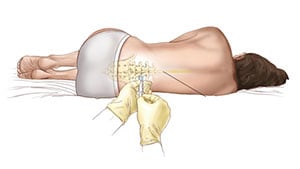Causes and How It Spreads
Causes
Bacteria called Neisseria meningitidis cause meningococcal disease. About 1 in 10 people have these bacteria in the back of their nose and throat without being ill. This is called being ‘a carrier.’ Sometimes the bacteria invade the body and cause certain illnesses, which are known as meningococcal disease.
Six serogroups (types) of Neisseria meningitidis — A, B, C, W, X, and Y —cause most disease worldwide. Three of these serogroups (B, C, and Y) cause most of the illness seen in the United States.
View, download, or print communication resources to learn more about meningococcal disease and how to prevent it.
Spread to others
People spread meningococcal bacteria to other people by sharing respiratory and throat secretions (saliva or spit). Generally, it takes close (for example, coughing or kissing) or lengthy contact to spread these bacteria. Fortunately, they are not as contagious as germs that cause the common cold or the flu. People do not catch the bacteria through casual contact or by breathing air where someone with meningococcal disease has been.
Sometimes the bacteria spread to people who have had close or lengthy contact with a patient with meningococcal disease. Those at increased risk of getting sick include:
- People in the same household
- Roommates
- Anyone with direct contact with the patient’s oral secretions, such as a kissing partner
Close contacts of someone with meningococcal disease should receive antibiotics to help prevent them from getting the disease. Experts call this prophylaxis (pro-fuh-lak-sis). This does not mean that the contacts have the disease; the antibiotics are given to prevent them from becoming ill. Health departments investigate each case of meningococcal disease to identify all close contacts and make sure they receive prophylaxis. People who are not a close contact of someone with meningococcal disease do not need prophylaxis.



